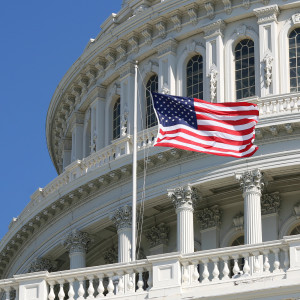Congressional leaders should use their spending bill to kill a policy from the last administration that targets businesses that contract together, argued a coalition of free-market advocates Tuesday.
The National Labor Relations Board (NLRB) sparked a heated debate when it updated a rule known as the joint-employer standard back in 2015. The business community was close to defeating the updated standard this past year, but unexpected events have kept it in place. A coalition of free-market advocates believes the spending bill could help.
The Competitive Enterprise Institute (CEI) is leading the coalition in the hope of reversing the policy change for good. The coalition issued a letter urging congressional leaders to include a legislative fix in their omnibus spending bill for this fiscal year – specifically a bill that passed the House but has yet to be taken up in the Senate.
“Congress has an opportunity now to fix the mess created by the National Labor Relations Board concerning vast new employer liability for countless American businesses and entrepreneurs,” CEI labor policy expert Trey Kovacs said in a statement provided to InsideSources. “The NLRB flip-flopping on previously longstanding joint-employer standards has caused immense uncertainty for job creators.”
The joint-employer standard determines whether an employer is legally responsible for the employees of a company it contracts with. Employers take on a lot of legal burdens and potential costs when they become joint-employers. Those opposed to the update argued it was overly vague and put employers at unnecessary legal risk.
Former President Barack Obama oversaw several significant changes to labor law during his time in office including the updated joint-employer standard. Supporters argue that the change was a needed update that prevented employers from sidestepping their responsibilities.
President Donald Trump entering office brought renewed hope that the updated joint-employer standard was going to be reined in. But it hasn’t exactly worked out that way. The new NLRB was compelled to reinstate the updated standard not long after it upended it and legislation designed to roll back the standard has stalled.
The NLRB was able to change back the updated standard when ruling in a case involving Hy-Brand Industrial Contractors. The decision looked to be a major victory for those opposed the updated standard. The board, however, decided to vacate that decision Feb. 26 over a conflict of interest involving board member William Emanuel.
Republican Rep. Bradley Byrne introduced the bill intended to roll back the updated standard. The legislation is written to clearly define what determines the joint-employer standard based on the standard before the update. The bill also addresses the patchwork of legal interpretations from various courts and federal agencies.
“Only Congress can restore certainty for businesses by passing the House’s Save Local Business Act into law,” Kovacs said. “Without a legislative fix, there is a looming risk that the vague and overly broad Obama-era joint employer standard will return.”
The joint-employer standard was previously determined based on whether a company had direct control over the employment policies of another business. That control could be over policies like wages, the hiring process, or scheduling. The updated standard is instead determined based on what is known as indirect control.
The NLRB was able to set the precedent for the updated standard when it ruled on a case involving Browning-Ferris Industries back in 2015. The update made it a lot easier to declare a company a joint-employer, which put employers at a lot more legal risk.
The coalition letter was also signed by free-market advocates like Americans for Limited Government, Americans for Tax Reform, Center for Worker Freedom, FreedomWorks, the Small Business and Entrepreneurship Council, the Taxpayers Protection Alliance, and others.

